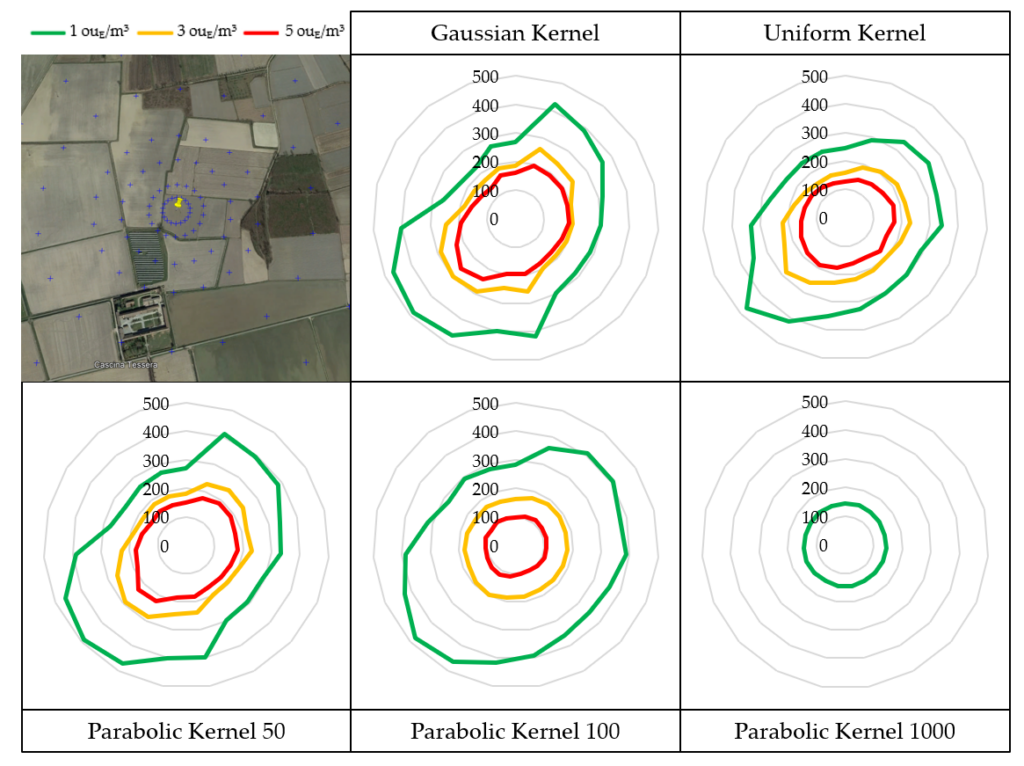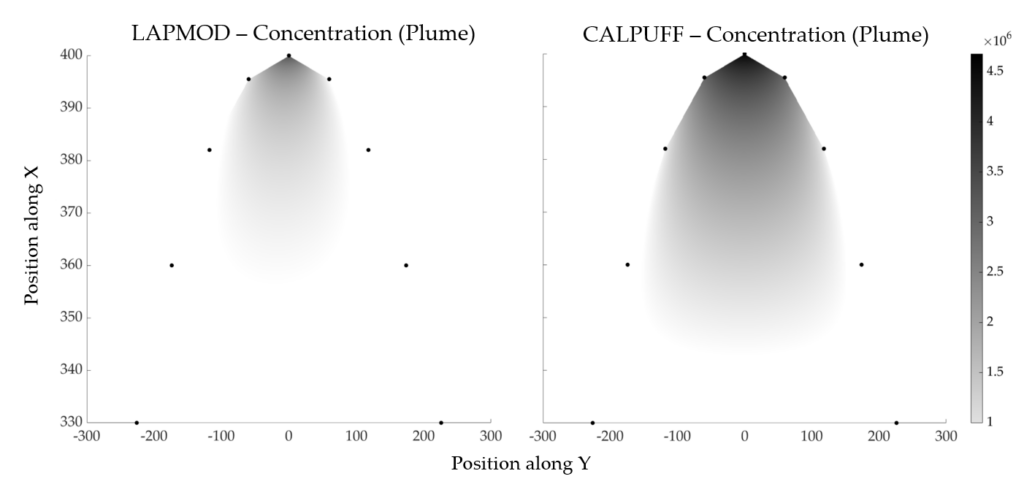When speaking of “olfactory nuisance”, we are referring to a phenomenon that is inevitably linked to human perception. Therefore, it is not possible to assess the olfactory impact of any emission source without taking into account the effect on the population living in the vicinity of the source.
In order to obtain a quantitative analysis of exposure to an odour at the receptors of interest, it is essential to use an atmospheric dispersion model. This calculation tool is capable of considering a complex set of input data to provide a quantification of potential odour nuisance in the surrounding area.
Fundamental parameters for the correctness of a dispersion model are the goodness and accuracy of the meteorological and orographical data of the area of interest and the meticulous characterisation of emission sources – even very complex ones. For several years, therefore, the Laboratorio Olfattometrico has focused on the study of the emission mechanisms of “non-conventional” emissions, such as tanks, landfills, and aerated and non-aerated purification tanks, and makes use of the most innovative software tools for the treatment of these systems.

The tools used are non-stationary dispersion models with a Lagrangian puff (CALPUFF) or particle (SPRAY, LAPMOD or GRAL) approach. hese softwares have the characteristic of being able to deal with complex orographic situations, such as hilly, mountainous or coastal areas, and situations of low or no wind (calm wind), which are very common in Italy.

Dispersion models can be not only descriptive, but also predictive. They can be used to analyse the current state of an existing plant, to assess its impact on the territory, but they can also be used for predictive estimates of planned new plants (at the EIA/ SIA stage), or to assess the impact reduction effect obtained as a function of different operating conditions and/or the installation of appropriate abatement systems, thus becoming a strategic choice tool for companies